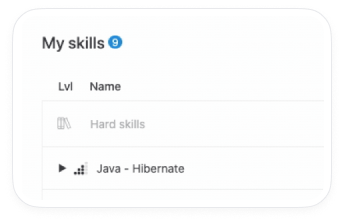Lead your organization strategically through automation
Table of contents
- De-demonize automation by shifting the narrative from fear to opportunity
- 5 questions to get started with automation
- What percentage of tasks can be automated for an individual, and where is there a significant likelihood that existing technology can automate certain tasks?
- How can I leverage employees in roles susceptible to automation, requiring time for teaching and transformation?
- How can I facilitate implementing reskilling and upskilling strategies to effectively support automation, enabling the seamless workforce adaptation to new technologies?
- In the context of automation, how can organizations ensure that employee compensation aligns with the value of their skills, acknowledging their contribution to the organization beyond traditional roles? Moreover, what strategies can be employed to determine if employees are being overpaid or underpaid, especially from the automation perspective?
- How does HRForecast assist companies in determining the most valuable skills for specific roles, particularly in the context of automation, by shifting from conventional role-based compensations to skill-focused assessments that gauge the impact on workforce value?
- Conclusion
Heard of the renowned trio Buy, Borrow, and Build?
If your professional path intersects with roles demanding meticulous attention to workforce dynamics, these three B’s are likely old friends. However, as the clock ticks and the future unfolds, a new contender steps into the arena, challenging the conventional trio. So, let’s raise our glasses to the fresh arrival, the paradigm-shifting B—Bot.
As time evolves, so too must our approach to the future. Here’s to the current imperative — the new ‘B’ that prompts the decision: Buy, Borrow, Build…or Bot? Now, before you think of botting as an immoral dilemma created by Hollywood movies, with concerns related to job displacement, economic inequality, and the potential dehumanization of work, let’s clarify what botting in the workforce means.
“Botting” is synonymous with “Automation”. The term emphasizes a proactive and strategic approach to leveraging automation for improved efficiency, cost optimization, and workforce planning.
De-demonize automation by shifting the narrative from fear to opportunity
Let’s take an example of a company that offers translation services and has 50 translators hired. Automation here becomes a methodical approach to identifying and automating tasks efficiently by deploying technologies like Chat GPT or Gen AI. In this scenario, recognizing that approximately 60% of translation tasks could be automated prompts a strategic decision to reshape the workforce, acknowledging that only half of the current translators may be needed in the future.
The strategic significance of automation lies in its impact on organizational competitiveness without delving into moral considerations. Firstly, it offers a means to cut costs in response to market trends. Companies can maintain cost competitiveness by embracing automation tools in fields like translation.
Secondly, this proactive understanding of the progressing environment allows for strategic resource reallocation. Recognizing the diminishing need for certain roles provides opportunities for reskilling and reallocating professionals in roles that demand human creativity, decision-making, and nuanced skills.
Automation serves as a vital tool in workforce planning, emerging as a strategic decision-making process devoid of moral dilemmas that not only automates tasks but also strategically shapes the workforce, optimizes costs, and positions the organization for resilience amid technological advancements.
5 questions to get started with automation
The five questions outlined below are pivotal in the context of automation as they collectively address critical facets, such as:
- The percentage of tasks that can be automated
- Identifying areas where technology can automate tasks
- Leveraging employees in roles susceptible to automation
- Strategic planning for reskilling and transformation
- An approach to stay competitive and innovative
- Importance of fair compensation based on skills and value brought to the organization
- Potential outcomes and scenarios resulting from a full investment in competitiveness.
Let’s get started.
Q1: What percentage of tasks can be automated for an individual, and where is there a significant likelihood that existing technology can automate certain tasks?
To elaborate on this question, let’s use a practical example from smartData, focusing on the role of a ‘Data Scientist.’ With smartData, we can precisely determine the potential for task automation, quantifying the impact of automation on various tasks. This involves providing a numeric representation of the automation potential, like the mentioned 32%, and delving into the specifics of the technologies responsible for driving this automation and how they operate.
The following example illustrates the percentage of tasks with automation potential and the key technologies influencing this automation. smartData goes beyond just presenting the 32% automation potential; it also offers detailed explanations regarding the technologies involved and their mechanisms. This comprehensive approach provides valuable insights into automatable tasks, the pivotal role of specific technologies, considerations related to Full-Time Equivalents, and the strategic aspects of workforce planning within the automation hemisphere.
Source: HRForecast
Q2: How can I leverage employees in roles susceptible to automation, requiring time for teaching and transformation?
The solution is implementing learning and development initiatives, encompassing upskilling, cross-skilling, and reskilling strategies. The underlying concept is to comprehend how automation impacts various roles, such as data scientists, and to discern the trajectory of technologies shaping the future. This involves identifying the specific technologies worth investing in. As automation advances, the focus shifts beyond mere productivity enhancement to considering how these roles can adapt and support integrating new technologies.
When we talk about automation potential, it doesn’t imply a direct reduction of, for instance, 32% in the capacity of data scientists. Instead, it emphasizes how automation might influence these roles. Therefore, there’s a critical need to invest in the right technologies to enhance competitiveness in the future. Simultaneously, it’s essential to devise strategies for upskilling or reskilling the workforce, ensuring their ability to adapt to emerging technologies. This constitutes the first aspect of the solution.
Moreover, it’s noteworthy that smartData not only assists in identifying new skills relevant for future automation but also aids in recognizing the potential for upgrading existing skills. While continuing to apply their current skills, employees can simultaneously enhance and adapt them to be more responsive to automation. The subsequent example elucidates how certain present hard skills, such as those of a data scientist, like Gen A.I. models, have transitioned from an advanced to an expert proficiency level.
Source: HRForecast
Q3: How can I facilitate implementing reskilling and upskilling strategies to effectively support automation, enabling the seamless workforce adaptation to new technologies?
In addressing the implementation of reskilling and upskilling to align with automation, smartPeople plays a pivotal role. Once workforce skill gaps are identified, employees can embark on a journey to build their future by defining development goals. This involves mapping out:
- Future job/Career path. Employees can outline their desired career trajectory, setting the stage for targeted skill development.
- Skills to be developed. Identify specific skills that need enhancement or acquisition, aligning with the demands of evolving technologies.
- Suitable training. smartPeople recommends relevant training programs tailored to the identified skill development needs.
Additionally, smartPeople offers insightful recommendations for future jobs based on existing skills, a perusal of the job library, and insights into roles with increasing demand. This proactive approach ensures strategic action to upskill and reskill, as exemplified in the illustration below of a junior UI designer. This integration of skill development planning and automation-focused career paths underscores the effectiveness of smartPeople in adapting the workforce to new technologies.
Source: HRForecast
Q4: In the context of automation, how can organizations ensure that employee compensation aligns with the value of their skills, acknowledging their contribution to the organization beyond traditional roles? Moreover, what strategies can be employed to determine if employees are being overpaid or underpaid, especially from the automation perspective?
A skill-value approach is imperative in determining whether employee compensation aligns with the value they bring to the organization, especially in the context of automation. This method involves deconstructing job roles to understand how specific skills influence market salaries, as exemplified by the three-level skill pyramid below.
The findings emphasize significant variations in compensation tied to automation-related skills and experience. For instance, in the illustration below, the value gain of a programming language crucial in automation constitutes 53%, with experience and specialization contributing 21% and 31%, respectively. Location also plays a pivotal role, impacting absolute salaries and skill value trajectory across different pyramid levels.
Source: HRForecast
The implications for organizations, particularly in the realm of automation, are noteworthy:
- Recruiting. Evaluate the value of candidates’ automation-related skills to avoid overpaying or underpaying, ensuring the attraction of top talents equipped for the unfolding tech ecosystem.
- Strategic planning. Enhance decision-making for automation strategies, discerning which skills to develop internally and which to acquire externally. Recognize the influence of location costs on-talent retention and attrition in the context of automation.
- Compensation & benefits. Introduce a skill-based component to the job-grade system, aligning with automation skills. This approach rewards specialized automation skills, fostering employee retention, encouraging learning of future automation-related skills, and attracts new talents suited for an automated future.
- Learning & development. Prioritize automation-related skills with a high-value increase, track the translation of learning and development (L&D) investments into skill value, and measure the return on investment (ROI) in the automation-driven environment.
Maximizing ROI in automation-focused Learning & Development
By improving workforce fit and tracking the transformation of Learning & Development spending into skill value, the ROI calculator helps you calculate potential gains today for informed, efficient, and high-performance investments.
Q5: How does HRForecast assist companies in determining the most valuable skills for specific roles, particularly in the context of automation, by shifting from conventional role-based compensations to skill-focused assessments that gauge the impact on workforce value?
Our approach is designed to help companies determine the most valuable skills for specific roles, particularly in the context of automation. By exploring specific features, we provide organizations with insights into skill valuation, moving beyond traditional role-based compensations.
In our applications, users can visualize the worth of each skill for a particular role, enabling a shift from generic role-based compensations to skill-focused assessments. The core idea is to assign a value to each skill, allowing businesses to assess whether they are overpaying or underpaying employees based on their skills rather than predefined roles. This approach addresses a crucial challenge in companies — measuring the return on investment in learning and development.
Consider a scenario where a company invests in training, aiming to understand the potential value of this investment. Our approach showcases the return on investment through the skills acquired in those training, transforming the learning and development sphere. This empowers individuals to make informed decisions about initiatives that enhance the value of their workforce, particularly in the context of automation.
Moreover, our system introduces a novel way of evaluating the value of workforce assets. It goes beyond traditional salary metrics, assessing the value based on the skills present in the organization. Proficiency levels further refine this assessment, recognizing that the value of skills can vary across different countries.
We have achieved a significant milestone after 1.5 years of development, presenting HRForecast skill values for approximately 43,000 skills and 6,000 jobs. For example, the illustration below provides groundbreaking data, including specific values such as €61,000 for the programming language R and €86,000 for Python, assessed per skill and categorized by skill proficiency levels, with monthly updates.
Source: HRForecast
In this example, skills are assigned a monetary value, providing a new perspective for HR management, especially in automation-driven scenarios. This includes decisions on skill development, optimizing pay during recruitment based on skill value, measuring the effectiveness of training programs in creating skill value, and systematically evaluating the success of acquiring and developing the company’s skill value. These capabilities, supported by extensive skill and job data, offer valuable insights and decision-making tools for strategic HR planning, particularly in automation.
Conclusion
The five questions presented guide organizations in leading through the complexities of automation, from task potential to workforce planning. Companies can position themselves for success in technological advancements by embracing skill-value assessments, reskilling initiatives, and comprehensive investment simulations.
As we raise our glasses to the ‘Bot,’ the key lies in proactive adaptation and strategic decision-making for a resilient and competitive future.
Stay up to date with our newsletter
Every month, we’ll send you a curated newsletter with our updates and the latest industry news.
































 info@hrforecast.de
info@hrforecast.de
 +49 89 215384810
+49 89 215384810






